Do you have a piercing on your body? If so, you should have a concern about cartilage piercing. Cartilage piercing is the second most common type of piercing. But an infection in the cartilage ranges from mild to severe. It includes bumps, abscess, boils, fever etc. It can also lead to deformation of the ear.
If you have a concern about the infection on your body, you came to the right place.Here, you will get to know more about the infection, its causes, signs, and treatment.
Many of you are familiar with infections. But cartilage piercing infection is quite dangerous. It is never easy to deal with a cartilage piercing bump as it isn’t responsive to antibiotics.
A cartilage piercing has greater chances of catching infections. The infection rate of cartilage piercings is 34%, whereas it’s 22% for body piercing.
Extreme conditions in cartilage piercing infections can lead to the development of abscess containing puss. Moreover, it can also occur with the development of scars and the formation of bumps in the ear and the nose. You may need to consult a doctor.
So, it’s imperative to have the right cartilage piercing information and the knowledge of its procedures and care.
Hence, a better understanding is the key for you or your loved ones to prevent such problems of pain and suffering and to treat it.
Now, let’s see the condition, its signs, causes, care and treatment in details.
Table of Contents
What Is Cartilage Piercing Infection?
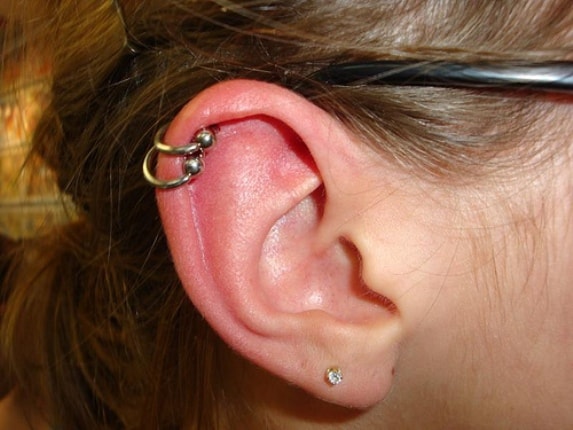
You see, body piercing is the oldest form of art. In recent, body piercing is gaining popularity and is in trend. Getting the body pierced is thought as a sign of being stylish. And cartilage piercing is the second most popular type of piercing.
Well, cartilage is the tough elastic tissue that is present in the ear, nose etc. Cartilage piercing is usually done by using a piercing gun or by a professional jeweler after sterilising the tissue.
When the cartilage is perforated, it takes longer to heal. As there is limited blood supply in these regions, it usually takes 8-12 weeks. This is with proper aftercare. If not tended with care, it can lead to infection. To be exact, cartilage piercing is said to be dangerous.
Cartilage piercing follows the proverb “no pain, no gain”. After pinching the cartilage, the pain of piercing follows. But this isn’t the end. It is seen that poor and unhygienic ways of piercing and care hinder healing. It includes swelling and infection of the ears or nose causing pain in the affected areas.
Extreme conditions can lead to the development of abscess containing puss. And even deformation of tissues.
Getting a cartilage piercing bump is an indication that you have an infection, but there are other symptoms that may appear after 3-4 weeks of the piercing. You will experience severe pain when you touch the area.
Other symptoms include redness of the skin around your piercing with tenderness and pain in the cartilage. You should also look at symptoms to get your infection treated while it’s just in its early stages.
The risk of having an infection can be immediate or may take time. Immediate infection involves risks during and post-piercing infection. It is mostly due to non-sterile equipment. The risk of bacterial infection and hepatitis is also present.
Since healing of cartilage piercing takes a long time, an infection may be caused by external factors too.
Hence, visit your doctor at the first sight of infection to avoid further damage.
Causes Of Cartilage Piercing Infection
Cartilage piercings on ears and noses are prone to getting “bumps”. Bumps are small, raised scars around the holes of piercing. Often it is just bad luck.
But, sometimes they are caused by incorrect jewellery, rough handling, or use of a piercing gun. Although these bumps aren’t dangerous, they can be unpleasant and itchy.
Immediately after ear piercing, you should have a slight swelling and pain that may last shortly. This argument is based on equipment used and whoever did it.
Infections on anybody piercings often come as a result related to the piercing process and care are given to the piercing.
Here are some of the common causes.
1. Unprofessional Piercing
One of the main steps to follow before getting an ear pierce or any other type of piercing is sterilization. Any piercing involves making contact with blood with another external thing. It may be a needle or the piercer’s hands too.However, if the piercing is done by unprofessional it can be unhygienic. It can lead to infections
2. Unhygienic Procedures
It is the most common cause of infections of the ear cartilage piercing. You may go to a piercer who makes use of unsterilized equipment like the gun and a needle.
Getting the piercings done with the unsterilized equipment is can lead to an infection as the bacteria can transfer from person to person.
According to webmd.com, there have been reports of “cluster of infections caused by the “Pseudomonas aeruginosa bacteria” in Oregon, US.
This bacterial infection has been attributed to the piercing using poor procedures that led to multiple people getting infected at the same time [webmd.com].
3. Wrong Jewellery
Some people suffer from an allergic reaction that often leads to more serious infection because of wrong jewellery. Nickel, for instance, causes an allergic reaction to many people.
So, ensure you only use jewellery made from stainless steel, titanium or gold. Furthermore, avoid going for jewellery that is too tight or loose.
4. Constant Touching
Majorities tend to ignore it but it is another common cause of infected cartilage piercing. As you know infected piercing is primarily caused by pathogens such as staphylococcus and Pseudomonas species.
Most of these pathogens live on human skin. If you touch your newly pierced ear with dirty hands, the infection causing pathogens transfers to the holes.Therefore, don’t be surprised your cartilage piercing is infected for months or a year after complete healing.
5. Poor Hygiene
Poor hygiene could be dangerous. You need to pay attention to keep your pierced area clean and dry while it is healing. Failing to maintain a high level of personal hygiene can increase chances of getting infections.
Basically, infections will spread from other body parts through indirect contact or touching.Like, if you have long hair but don’t keep it clean regularly, hair becomes a spot for the fungal and bacterial harbor that can lead to infections.
Besides, you may end up getting your cartilage piercing infected as a result of some physical injuries that result from the process of piercing, over cleaning of the cartilage piercing and the usage of a piercing gun.Regularly touching the jewellery may also lead to an infection.There are also external factors that can lead to infections.
6.Swimming
Swimming in waters which are stagnant and contaminated usually causes infections by the pathogen named Pseudomonas.
7.Chloride Used
Disinfectants contaminated with species of bacteria as well as benzalkonium chloride used as antiseptic in hospitals are also the sources of infection.
8. Jewellery
The improper use of piercing guns, needle, jewellery or other methods of piercing using metals may also amount to infections.
9.Splinting
Improper techniques of incision, splinting and drainage are the primary causes of cartilage infection and swelling.
Aftercare Of Cartilage Piercing
1. Daily Care Routine
Don’t touch your piercing unless you are cleaning it. Unwashed hands carry bacteria and can cause infection. While healing, your piercing needs cleaning once daily. Note that cleaning often harms your piercing.
You will need to use an antibacterial soap that has chloroxylenol or triclosan.
Some of the other aftercare are listed below-
2. Warm Water And Saline Solution
Saline solution helps if the piercing hurts and aids in the healing process. One of the most common ways to take good care of your piercing is cleaning it using warm water.
It can be done after you shower with soap or shampoo your hair. Warm water relieves pain and minimises chances of your ear cartilage swelling.
Also, cleaning promotes healing as it discourages microbes from accumulating near or in the pierce.
3. Avoid Touching
Avoid touching unless you have a reason such as cleaning. Resist touching especially if it is a newly pierced cartilage. When you require changing piercing jewellery (studs or earrings), cleanse both your hands and rinse all tools you are going to use to avoid germs transfer and infection-causing microbes. Dry your hands too.
However, during the healing phase, you shouldn’t change your piercing jewellery often.
Furthermore, touching twists your cartilage piercing slowing healing time. It can also lead to breakage of naturally formed crust around the piercings
4. Avoid Smoking Or Smoke
Smoke is one of the various irritants apart from chemicals. Hence avoid it
5. Don’t Change Your Jewellery
Unless you have a different problem with your upper ear piercing, don’t change the initial studs until it has healed.
6. Use Fitting Hypoallergenic Jewellery
Don’t insert non-standard jewellery other than standard titanium hygienic inserts or other jewellery that your piercer recommends.
Use of quality ear jewelry is an important aftercare tip to prevent possible contact allergy that may cause your outer ear to swell badly.
Some of the other things that can be helpful are down below-
7. Try to avoid top clothes without buttons and go for those open or with buttons. It is important to minimize injury to your ear when removing or wearing clothes such as T-shirts.
8. Don’t allow your friends to touch your ears as it is a potential means of transferring germs directly by contact.
9. Avoid using hydrogen peroxide, alcohol during cleaning.
10. Ensure that your hair and bedding are tidy, cleaned or regularly changed.
11. Satisfy your nutritional diet to promote healing.
Signs Of Cartilage Piercing Infection
Piercing is known for its dangerous procedure. Are you scared by the risks of piercings on your ear cartilage? You might be wondering how you would know if your cartilage piercing is infected so as to be treated early. It is simple.
Here are some of the common cartilage piercing infection signs and symptoms that you will never miss.
Tenderness and pain, redness of the skin, the area around the piercing site feel hot, discharges from the piercing on your cartilage that might include pus that might be green or yellowish in color.
The color around the piercing site changes its color, prolonged bleeding, crust formation and scabbing. Fever especially if you have been infected with Pseudomonas aeruginosa that cause Perichondritis.
a. Redness
One of the common symptoms is indicated by skin around your piercings. It turns red or a colour different from that of skin.
b. Pain
If your piercing becomes painful to touch, beware it could be an infection sign particularly when signs of reddening or aching are present.
c. Oozing
People think it could be normal to get white or pale yellow oozing or discharges. Well, this isn’t always true. But, if you see a green or brown pus-like discharge leaking from cartilage piercing something is wrong. There is high chance that it is infection signs.
d. Bad Smell
Smell may come out of the piercing. It is most of the time bad odour.
e. Bleeding
It is another serious sign of severe cartilage piercing infection. It rarely occurs. And, bleeding can also be common after an injury that easily predisposes your ear cartilage to infections.
f. Fever And High Temperature
In severe cases, you may experience high temperature or warm feeling when you touch the area around the piercing site. This should be a serious concern and cannot be something to ponder. You should seek medical checkup immediately if fever and earache develops
Other symptoms include allergic reaction, earlobe tearing, Keloids – A large darker colour that surrounding your skin, nausea, damage to underlying blood vessels or nerves, vomiting, stretching and associated problems, Boils (bacterial pocket) and abscesses, Scarring – it occurs due to the pressure exerted during the piercing period, redness and red bumps.
Precautions For Cartilage Piercing Infection
Here I have listed some before and after piercing precautions.
i. Suitable Materials
You should consider using surgical stainless steel, 18-carat gold, titanium, niobium, PTFE.
Don’t use 9-carat gold, silver (as it stains the tissues permanently), or gold-plated jewellery in new piercings. Because in a healing cartilage piercing the gold plating can wear off from the jewellery before the piercing is healed.
ii. Changing Jewellery
You are prone to damage your piercing if you change jewellery during the healing period. This should be done by a professional piercer. When the piercing is healed, you can change it yourself.
iii. Cleaning Agents
Never use alcohol swabs, chemicals like Betadine, chlorhexidine, hydrogen peroxide, methylated spirit, or tea tree oil to clean your piercing. It kills bacteria but also destroys your healing flesh. The killed flesh then becomes easy for infection.
iv. Hair
When your hair touches your jewellery it may transfer bacteria into your piercing. Before piercing, you should wash and dry your hair. You should consider tying your hair back or cutting your hair if it is touching your jewellery.
v. Viral Infections
Viruses like Hepatitis A, B, and C, and HIV can penetrate the piercing if it is not healed. These viruses may be present in the blood, saliva, semen, sweat and vaginal secretions of infected persons. Until your piercing has healed avoid any other person’s bodily fluids contacting your piercing.
vi. Vitamins
Studies show that vitamin C and zinc promote healing. Aim for about 2000-3000 mg vitamin C and 100 mg zinc daily. If you are taking medications, ask your pharmacist to make sure there are no interactions between them and the medicines you intend to take.
Like, vitamin C delays the absorption of the contraceptive pill – they should be taken at different times.
Treatment For Cartilage Piercing Infection
As a first-aid, you should do daily cleaning routine using anti-bacterial soaps. However, you should also note that healing of the infected cartilage piercing takes place in 3 stages.
- The first stage is the inflammatory stage in which your wound is still open when chances of inflammation are high.
- The second stage is growth stage in which your body produces collagen.
- The final stage is remodelling or maturation stage in which disorganized collagen fibres repair and realign. This may take from months to years.
Even with meticulous care, cartilage piercings become infected about 30% of the time. The good news is that the treatment for infected piercings is simple when caught early.
Medical Treatment
If there is no pus and no abscess (firm pocket of pus in the ear that needs to be drained), infected ear cartilage can be treated with common oral antibiotics.
Most infected ear piercings are caused by a bacterium called Pseudomonas aeruginosa, and so you need an antibiotic that covers this bacterium, such as ciprofloxacin or levofloxacin. Amoxicillin, Augmentin, and Keflex do not cover pseudomonas infections and are not the right drug to treat infected ear piercings.
If pus is draining from your pierced cartilage or an abscess, you may need to go to the hospital for intravenous antibiotics and possible surgical drainage of the infection. It is a medical emergency. Waiting can result in permanent loss of ear cartilage.
Other medical complications from cartilage piercing include allergic reactions to earrings, scarring and pull-through tears of the ear, and two severe medical conditions called pyogenic granuloma and keloid formation.
Allergic reactions to earrings are common if the earrings are made of nickel. It is easily treated by removing the earrings and replacing with gold or nylon earrings. Nylon (plastic) studs are inexpensive and rarely cause allergic reactions.
Earrings buried in the ear lobe. Sometimes earring backs get embedded in the ear because they are pushed too tightly while sleeping. Even if they are not yet infected, these injuries usually involve removing earring parts with surgical instruments and the treating the wound that remains.
Pyogenic granuloma is a medical complication of cartilage piercing causing a red or flesh-colored lump near or around the piercing. It is caused by an overgrowth of tissue that can occur during wound healing.
Keloids are another medical complication of piercing that also results in a flesh-colored bump, usually at the site of the piercing. Specialised treatment from a plastic surgeon or ENT specialist is necessary for both of these conditions.
Home Remedies To Get Rid Of Cartilage Piercing Infection
At home, you can try using warm water rinsing to reduce the pain. I have listed medications above. Now I will tell you regarding home remedies that can go hand in hand with the medications. It involves the use of lemon, chamomile, aspirin, tea tree oil etc which are easily available in the kitchen or in the convenience stores.
I shall now tell you the remedies in details-
1. Vitamin C
Vitamin C helps in healing the infected area fast. Hence, you should increase your Vitamin C intake.
2. Tea Tree Oil
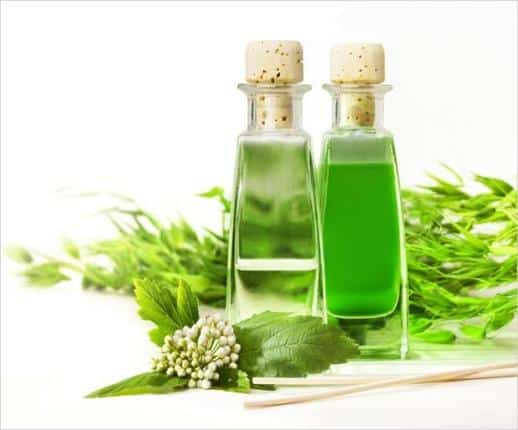
The antibacterial property of tea tree oil makes it a great remedy for cartilage piercing bumps. Just dab a cotton ball in the oil and apply it directly on the affected area. Do it once a day for a week to see results.
3. Warm Water Cleansing
If you don’t have oil available at home, you can simply use warm water for pain relief. Just dab a flannel cloth or gauze in warm water and use it to clean the affected area.
Make sure to keep your pierced area clean, as it accelerates healing.
4. Sea Salt Soaks
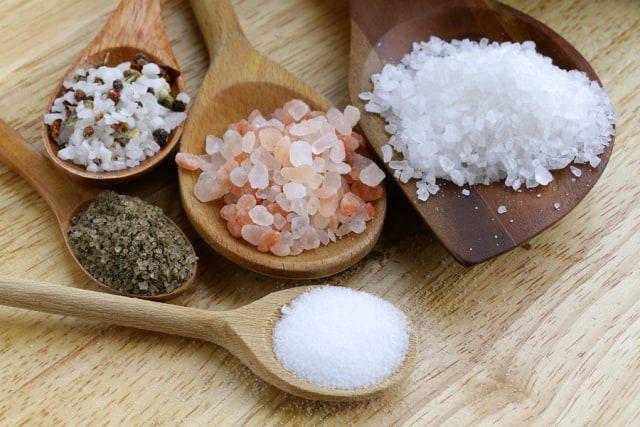
Saline solutions help in disinfection and so sea salt soaks are used. For this, Take a clean bowl and add 8 ounces of warm water with a quarter teaspoon of sea salt to it.
Mix well and dab it with cotton directly on your bump. Leave it there for 10 minutes and then rinse it off completely. Doing this helps to get rid of your cartilage piercing bump.
5. Chamomile
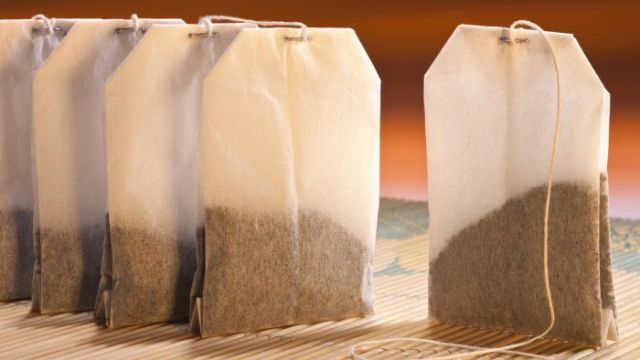
Sea salt treatment becomes more effective when coupled with chamomile tea bags. For this boil the chamomile tea bags for few minutes, let it cool and apply it on the affected area.
Leave it for 10 minutes or till the tea bag dries.
6. Aspirin
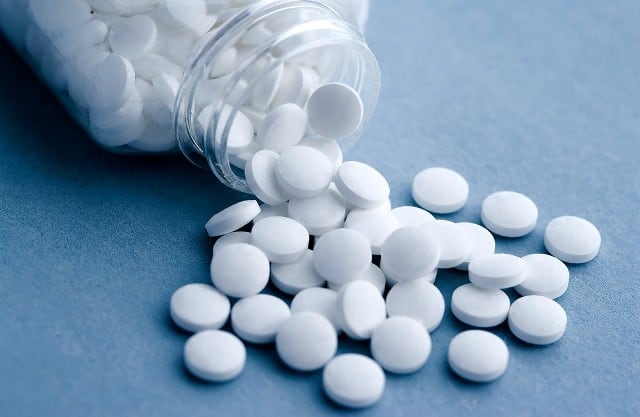
Owing to its anti-bacterial property, aspirin can be used. For this, crush an aspirin and then add a few drop of water to form a paste. Apply the paste on the affected area and leave it on for pain relief.
It also helps open up your blood vessels and promotes healing.
7. Lemon Juice
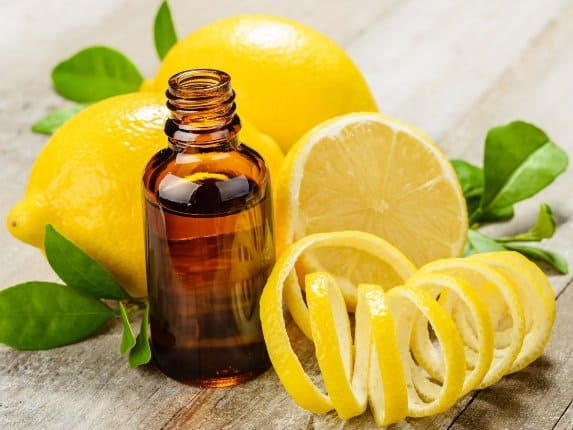
Mix a few drops of freshly squeezed lemon juice with water in a bowl. Dip a cotton ball and apply it on the bump. Lemon juice helps in getting rid of cartilage piercing bump.
The paste of lemon juice, aspirin, and warm water also helps relieve pain and itch. Lavender oil can be used for the better healing of the pierced area because it acts as a lubricant for cartilage piercing and helps in the healing of the scars and prevents tightening.
During the healing process, you should take proper care of nutrition, you must avoid alcohol and smoking. This ensures you with good blood circulation to help you heal faster.
It is essential for you to bear the pain and duration of the healing process. It is so as the slightest mistake may aggravate the duration and the extent of suffering. And, you should be careful to ensure that the affected area has been treated completely.
Because the pierced area may appear as healed but the tissues within the cartilage may not have actually healed. Carelessness causes complications which can lead to the unusual discharge of fluids from the pierced area. This may give rise to pain and reddening of the pierced area.
Hence, cartilages are very sensitive in nature and so it must be pierced by only a trained and a highly experienced piercer so that you can flaunt fashionable earrings and other accessories with slight pain but no suffering.
However, it is advisable to get treated by a dermatologist or an E.N.T specialist in case the situation worsens.
Taking Precaution and proper care is the best key.
Also Read
Smiley Piercing, Anti-Smiley Piercing: Healing, Infection, Risks, Pain & Aftercare
Microdermal Piercings: Things You Should Know Before Getting This Done
Monroe Lip Piercing: Pain, Scar, Infected Aftercare, Healing
Double Tongue Piercings: Procedure, Risks, Healing Time
Belly Button/Navel Piercing Infection:: Causes, Symptoms, Treatment
Dahlia Piercing : Pictures, Aftercare, Healing, Scars
Medusa Piercing Swelling: Aftercare, Scar And Piercing Risks
Snake Bites Piercing: Pain, Healing, How To Hide
Home Remedies To Get Rid Of Nose Piercing Pain
Home Remedies To Get Rid Of Infected Nose Piercing Bump
Infected Belly Button Piercing Symptoms, Causes, Cure
How To Treat Infected Nipple Piercing?





